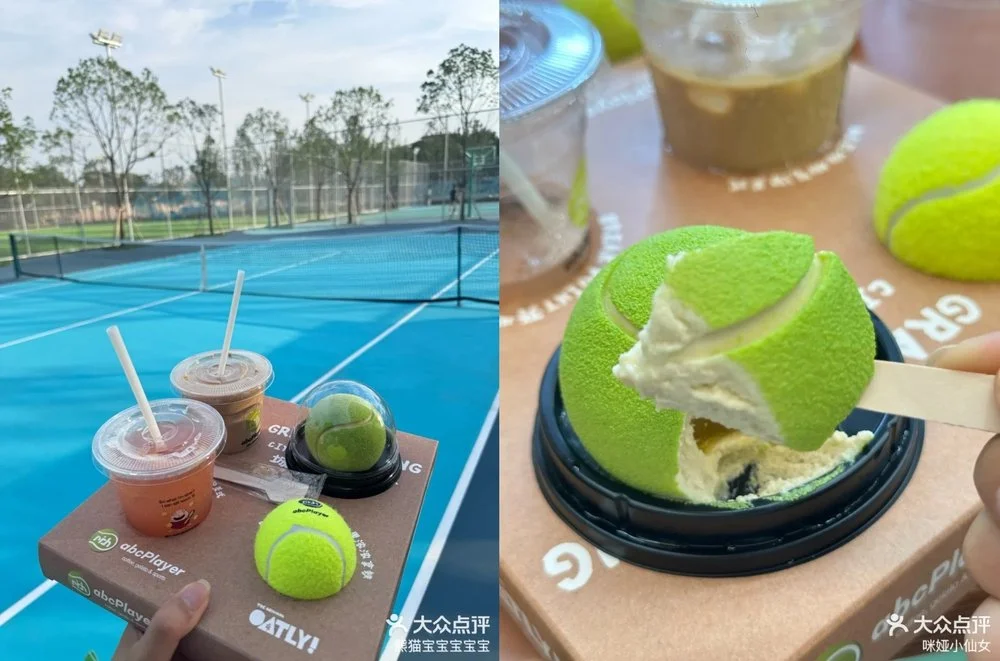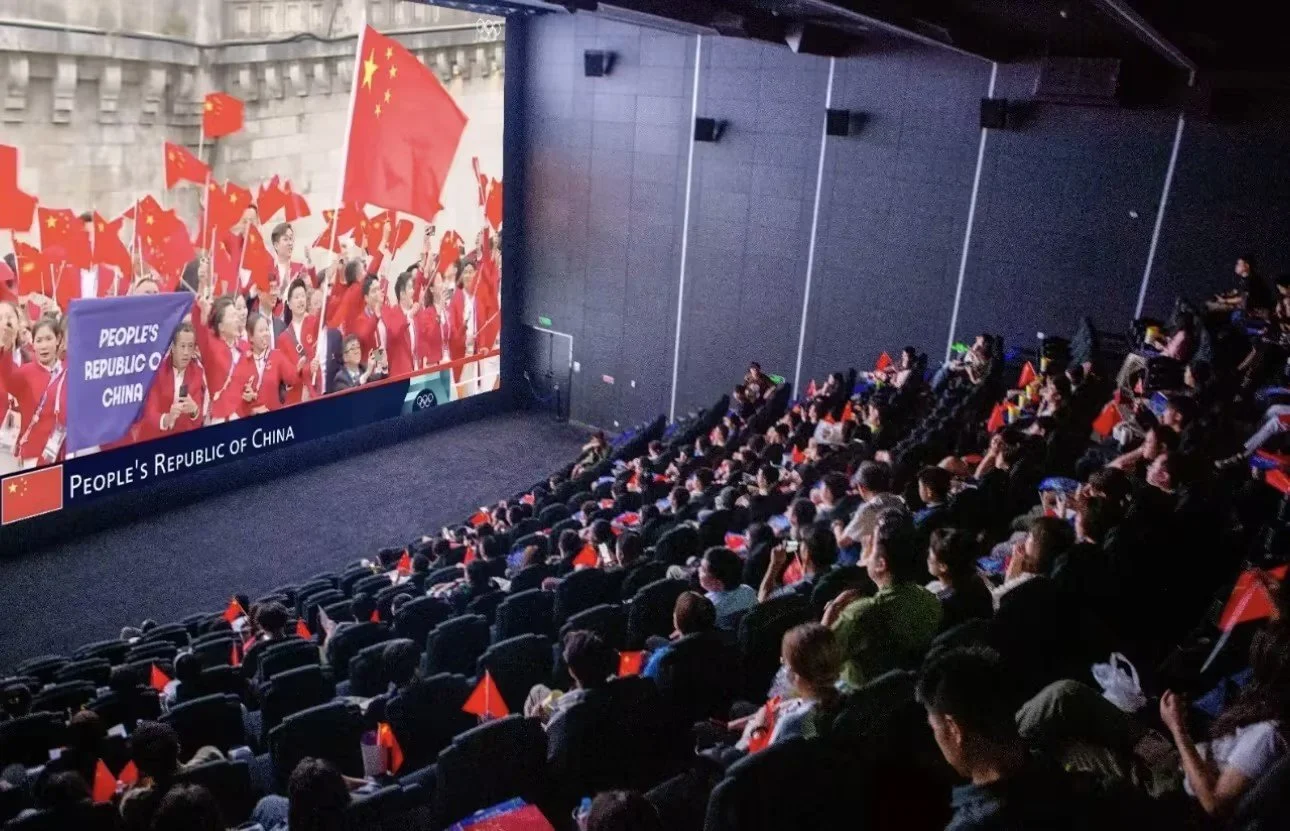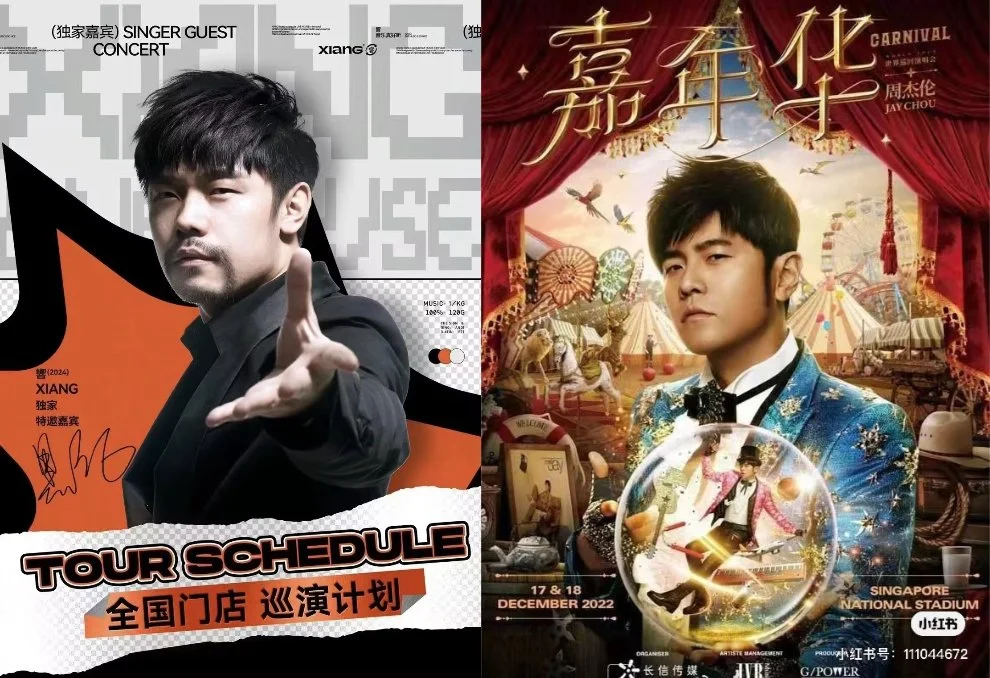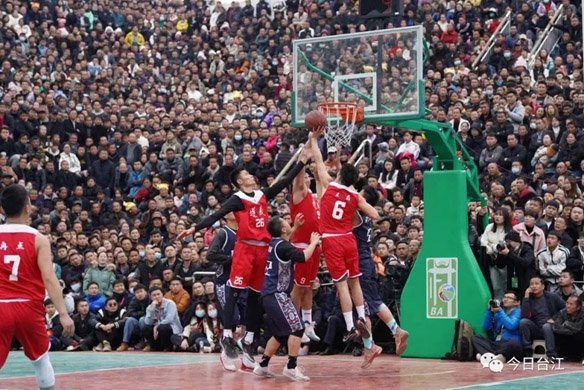China's first F1 driver captures consumer brands' attention
After a five-year hiatus, Formula 1 returned to the Shanghai International Circuit in April 2024. As the first Chinese driver to compete in an F1 race, Zhou Guanyu finally made his home debut. In the weeks leading up to the race, massive advertisements featuring Zhou Guanyu could be seen throughout Shanghai, on office buildings, subways, malls, and restaurants.


Advertisements endorsed by Zhou Guanyu are visible everywhere in Shanghai. Images are from RED
Formula 1 is recognised by Chinese consumers as representing the advanced level of the global automotive manufacturing industry - something China is increasingly present in - and often compared to the World Cup and the Olympics. It has now finally welcomed the first Chinese face in its history. This has not only ignited the enthusiasm of car enthusiasts but also propelled Zhou Guanyu's commercial value to new heights.
Today, Formula 1 is no longer just a celebration for car manufacturers, an increasing number of consumer brands are also getting involved. First, Lululemon announced Zhou Guanyu as a brand ambassador, followed by McDonald's announcing him as a spokesperson for their new product. In addition, consumer brands such as PUMA, Dior, and Chivas have all engaged in commercial partnerships with Zhou Guanyu. It is not unlike the Eileen Gu frenzy during the Winter Olympics.


Products endorsed by Zhou Guanyu. Images are from RED
Consumer brands are eyeing Zhou Guanyu, perhaps due to the high value of his male fans behind him. Zhou Guanyu's Douyin account has a total of 668,000 followers, with males accounting for 88%. Around 35% of the followers are aged between 31 and 40, with approximately 25% from first-tier cities, 21% from ‘new first-tier’ cities, and 20% from second-tier cities. Among them, over 50% of users use iPhones.
Often, the results of competitions and the size of fan bases do not necessarily determine the commercial value of sports stars. The most crucial question is "who is watching them?" Zhou Guanyu currently has a scarce presence in the market. In 48 races since 2022, he’s yet to reach the podium, placing 12th for Alfa Romeo in Shanghai. His achievement is not to be sniffed at though - the performance of what car you drive is a limiting factor, and Zhou’s is towards the bottom of the grid. Most importantly only the top 20 drivers globally can enter Formula 1, and he is the only Chinese face among them. That is what has appealed to Chinese consumers and brands, more-so than his results on the track.

Sports like skiing and Formula 1 racing, once considered "games for the wealthy" and niche activities, are slowly breaking barriers after Eileen Gu and Zhou Guanyu represented Chinese people on the world stage. Time will tell if his presence in F1 continues and brand value remains strong.

Zhou Guanyu and Eileen Gu exchange words before the start of the F1 race. Image from RED
Longchamp grew 20% last year while other luxury brands struggled. It did so by building its brand around its products, and by building immersive, seasonal experiences
Elderly influencers provide a counter-narrative to China’s intense work culture, proving that seniors can live life on their own terms, which is proving endearing to young Chinese consumers often labelled as “fragile youth”
The record-breaking triumph of Ne Zha 2 confirms that compelling storytelling, rooted in Chinese culture and reflective of current societal sentiment, can profoundly influence consumer behaviour.
Conversations are likely to be a little different for many young Chinese returning home for their Chinese New Year holiday
A Harper’s Bazaar campaign featuring hotpot CEOs is a testament to the power of blending fashion, culture, and business leadership. It not only redefines the role of CEOs in branding but also highlights broader trends in cultural revival, emotional connection, and experiential marketing.
Social media feeds increasing filled with “rough life” posts, alongside the popularity of more authentic retail spaces are just two examples of how Chinese consumers are seeking more real, less polished marketing
Moncler invested $28 million in the one-day "The City of Genius" event in Shanghai, blending global vision with local creative culture. For foreign luxury brands, the Chinese market remains unparalleled, and Moncler’s showcase sets a powerful example of how to captivate and inspire younger Chinese consumers.
Wukong is a huge deal in China, not just being the first AAA game and record sales and players, but for its wider impacts on consumer behaviour and branding opportunities
Xiaohongshu/RED launched the "5-Minute Workout Boost" campaign to coincide with the Paris Olympics and summer vacation, making exercise accessible and easy to fit into daily life.
Over the past two years, many young Chinese thrill-seekers have taken a liking to via ferrata, a climbing activity that requires less experience while offering more spectacular scenery. It allows climbers to experience the thrill of "leaping like a crane" on steep mountain peaks, akin to ancient Chinese martial arts heroes, combining danger with allure.
During the Paris Olympics, China's enthusiasm for sports was reignited, leading to a rise in popularity of cafés themed around sports like table tennis, tennis and basketball.
As Chinese Valentine's Day, Qixi Festival (七夕节) conveys Chinese-style unique romance between lovers and couples. Check it out to see how brands are embracing this traditional festival in creative ways.
Chinese movie theatres live-streamed the Olympics’ opening ceremony and events for the first time, filling up with young people captivated by the experience
New types of bloggers called matchmaking analysts - the Sherlock Holmes of the dating world - are capturing much attention in China’s social media. There are the reasons for their popularity, but also concerns…
Standup paddleboarding is trending this summer, catering to Chinese consumers' desire for personalized experiences in water sports. And brands tapping into the trend are further enhancing its appeal.
Despite the Paris Olympics getting mixed reviews in China so far, the opportunities for brands to align with sports to connect with consumers is large, and growing
The opening ceremony of the Paris Olympics, along with other parts of the Games, hasn’t been without controversy, but Chinese brands like Yili, HEYTEA and Kuaishou have capitalized on the interest of the spectacle to launch impressive marketing campaigns.
Extreme-sport specific cosmetics, tents for pets, outdoor coffee gear and urban sports are just some of the outdoor industry trends China Skinny identified at the ISPO 2024
At Euro Cup 2024, Chinese brands accounted for five of the 13 top-tier brands, more than any other country. The success of BYD’s sponsorship has been slightly dampened by an adult toy site in the host country of Germany
With the explosive popularity of Jay Chou's Carnival Tour, his impersonators have also started their own live tours with super-expensive VIP tickets almost sold out
This year’s Dragon Boat Festival has seen zongzi makers, consumers, brand gifts and AI-folk all innovate new and special zongzi
Mother’s Day ads showed how socially attuned brands are to mums, with some great campaigns but also some woefully inappropriate
Zhou Guanyu, China’s first ever F1 driver is a valuable commodity for brands in China, including lululemon, McDonald’s, Puma, Dior, Hennessy and HSBC
Brands from JD to Xiaomi are using their founders to build traffic and preference in China
China’s village basketball league is the hottest game in the country right now, accumulating over 800 million viewers online and attracting NBA stars
Brands taking over wet markets has connected with Chinese youth online as they place higher value on community, neighbourhood connections and every day cultural activities
AI influencers are shifting hefty sales volumes n Douyin, but on close inspection there are some tell-tale signs that they are not real people
Lionel Messi puts his name to a Baijiu, but the delivery underwhelms and disappoints fans
It wasn't long ago when every marketer in China was talking about ecommerce. Alibaba and JD battled it out for supremacy, and then another challenger, Pinduoduo, came from nowhere, and it became a three-horse race.Whilst the traditional ecommerce platforms still dominate online sales in China, the new world of livestreaming, KOLs and social commerce has dominated marketing forums over the past few years.





























It's a lot cheaper to retain a customer than acquire a new one, so the old adage says. Many marketers in China don't seem to have got that memo, with marketing plans based around increasingly expensive livestreams and KOLs for sales, with limited initiatives to retain those customers once they've transacted.We track many loyalty initiatives at China Skinny, but one of the most exciting we've seen lately is from Chinese EV brand, Nio. Car sales have been one of the brightest categories in China's retail sphere, last month growing 17% year-on-year. As we noted in July, Beijing has been strategic in putting its weight behind car sales - it takes a lot of packaged goods or shoe sales to match that of a single car in making retail sales look rosy.